A SURVEY ON FACE MASKS AN INDISPENSABLE TEXTILE MATERIAL IN THE COVID TIMES
Abstract
The Covid-19 pandemic has made masks an integral part of our lives. Masks are being recommended as an effective tool to reduce the spread of coronavirus. They act as a barrier, preventing the transmission of virus containing droplets to and from the environment. A study was conducted to understand the level of awareness among the citizens regarding the usage of masks. Their opinions have been collected through an online survey. A thorough study was done considering various aspects related to masks like their effectiveness, qualities, awareness about the material of which they are made, discomfort caused by them, reusing, layering, cost, etc. It was found out from the survey that respondents are aware about the importance of masks and are consciously choosing the right masks keeping in mind its various attributes so as to ensure their safety.
- Introduction
Since last one and half years the whole world has been facing the Covid-19 pandemic. It is a pneumonia-based disease caused by the infection of Severe Acute Respiratory Syndrome Coronavirus 2 (SARS-Cov-2). Coronaviruses are a large family of viruses that can cause illness in humans as well as in animals. In humans, coronaviruses cause respiratory infections ranging from the common cold to more severe diseases such as the Middle East Respiratory Syndrome (MERS) and Severe Acute Respiratory Syndrome (SARS).
The main route for spread of infection is believed to be through respiratory droplets ranging in size from 10-5µm and aerosols (less than 5µm). The larger droplets easily fall out of the air due to gravity while the smaller droplets remain suspended in mid-air. This leads to virus transmission via three different methods- Droplet, Airborne and Fomites. [1]
- Droplet transmission is a direct method of transmission wherein a healthy individual gets infected due to inhalation of droplets released by infected individuals while sneezing, coughing or talking. It occurs when a person is in close contact (within 1-2m) with the infected individual. [2]
- Airborne transmission occurs due to the aerosols that remain suspended in air for long distances and time. When a susceptible person inhales these aerosols, could become infected if the aerosols contain the virus in sufficient quantity. [2]
- Fomites are the surfaces or objects that are contaminated by the virus containing respiratory droplets. The virus can remain on these surfaces from hours to days depending on the ambient environment and the type of surface. Thus, indirect transmission can occur when a person touches these surfaces, followed by touching nose, mouth or eyes. [1]
Various preventive measures have been suggested to minimize the transmission of the virus which include maintaining social distancing in public, wearing masks to cover nose and mouth, frequently washing hands with water and soap, avoid touching eyes, nose and mouth frequently, avoiding large gatherings and crowded places, etc.
Out of all the measures stated above, the present study focuses on masks as an important tool to prevent the spread of the Covid-19 virus.
- Masks
A Mask is defined as a covering worn over the mouth and nose in order to reduce the transmission of infectious agents, or to prevent the inhalation of pollutants and other harmful substances.
Wearing a mask can help to reduce the transmission of virus in two ways-
- Masks can reduce the quantity of respiratory particles entering the environment due to coughing, sneezing, speaking by trapping them within the mask. This is known as ‘source control’.
- Masks can also prevent the respiratory particles from the environment from reaching your nose and mouth.
Prior to covid-19, there was limited awareness that community mask wearing can reduce the spread of respiratory infections. During the pandemic, the scientific evidence has increased. Compelling data now demonstrate that community mask wearing is an effective nonpharmacologic intervention to reduce the spread of infection, especially as source control to prevent spread from infected persons.[3]
2.1 Types of Masks
Variety of masks are available in the market. The three most common ones are surgical masks, respirator masks like N95 and cloth masks.

Figure 2: Types of Masks
- Surgical masks or medical masks are loose-fitting disposable masks which filter out large-particle droplets and protect the wearer from sprays or splashes of virus containing droplets. They are flat and rectangular in shape with pleats or folds. [4]
- N95 respirators are more tight-fitting masks. They offer more protection than surgical masks as in addition to large droplets, they also filter out very small particles. They are generally circular or oval in shape and form a tight seal around the face. As they offer good fitting and very high filtration efficiency, they are suitable for use by healthcare providers. [4]
- Cloth masks are most widely used by common citizen. They intend to trap respiratory droplets that are released when the wearer talks, coughs or sneezes. They also filter particles from the environment up to some extent. The most effective cloths masks are made of multiple layers of tightly woven/ knitted fabric like cotton.
2.2 Efficiency of masks
Recently many studies are being conducted to study the efficiency of the different types of masks. One of the studies reveals that cotton masks can cause 20-40% reduction in virus uptake while N95 masks show highest protective efficacy with 80-90% reduction in virus uptake [5]. In addition, cotton masks and surgical masks block more than 50% of virus transmission thus helping in source control. However, it was found that N95 masks were not able to completely block the transmission of virus droplets/aerosols even when completely sealed. [5]
Another study comparing the filtration efficiencies of masks made from different fabrics, revealed that multiple layers of fabric show higher filtration than a single layer and it is further increased when a combination of different fabrics is used for the layers. It is assumed that the enhanced performance of the hybrids is due to the combined effect of mechanical and electrostatic-based filtration. The same study also revealed that a tightly woven cotton fabric having a thread-count of 600 TPI far outperformed a moderate-thread-count (80 TPI) quilter’s cotton for particles of all sizes. [6]
Double masking with surgical and cloth masks is seen to be more effective, as revealed by a study of the United States Centres for Disease Control and Prevention. The CDC recorded that unknotted surgical mask blocked only 56.1% of cough particles while a knot and tuck surgical mask blocked 77% of particles. Further, cloth masks blocked only 51.4% of cough particles. On the other hand, a combination of cloth mask and surgical mask was seen to block 85.4% of the particles. [7]
2.3 Necessary Qualities in a Mask
The main considerations to keep in mind while buying a mask are-
- Fit– A well-fitted mask should seal the face, covering both nose and mouth without leaving any obvious gaps. It is important that a mask should fit the face perfectly because it has been found that leakages around the sides of a mask can reduce filtering efficiencies by 50 percent or more. [6,8] Masks with a bendable metal nose strip can help to create a tight seal and hold the mask in place.
- High filtration– Filtration efficiency represents the percentage of particles within a defined size range that are expected to be blocked by the mask. Masks having higher filtration efficiencies will block out more particles and therefore can offer better protection than others. [9]
- Breathability– Breathability relates to the ease of breathing while wearing a mask and is usually reported as the difference in pressures measured on each side of the mask. Masks with large pressure differences would make breathing more difficult. The WHO recommends a pressure difference of less than 100 Pascals across the mask. [9]
- Fabric– When choosing a fabric, the tightness of the weave is important. Tighter the weave, better is the filtering efficiency. In terms of fabric type, filtering experiments show that tightly woven 100% cotton fabric outperforms most synthetics. [8]
- Multiple Layering– Masks made out of multiple layers of fabric or material often show improved filtration efficiency compared to single-layer masks. The WHO recommends fabric masks having a minimum of three layers that include an Inner layer of absorbent material, such as cotton; a Middle layer of non-woven non-absorbent material, such as polypropylene; and an Outer layer of non-absorbent material, such as polyester or polyester blend. [10]
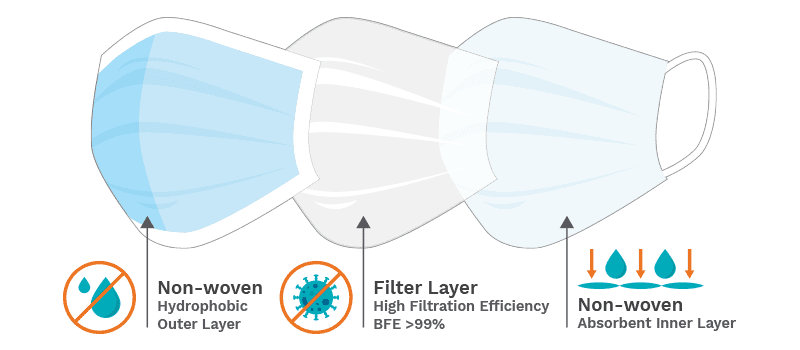
Figure 3: Multi-layered Mask
- Exhalation valves– Some of the commercially available masks include exhalation valves that are meant to make breathing easier. However, such masks are not recommended as they allow the user to expel respiratory droplets and thus, limit the function of the mask as source control.
- Method
3.1 Research Approach
This study followed a qualitative research approach. Qualitative research is defined as a market research method that focuses on obtaining data through open-ended and conversational communication. It reveals the behavior and perception of a target audience with reference to a particular topic. In this research the perception of audience regarding face masks was studied. The responders filled a questionnaire consisting of multiple-choice questions and a few short answer questions.
3.2 Data Collection
Online survey questionnaire was created using Google Forms and sent to respondents via direct messaging. In all, 71 responses were received. The responders belonged to age group from 15 to 60 years with 19.7% responders being below 20 years, 49.3% from 20-35 years, 11.3% from 35-50 years and 19.7% above 50 years. About 37 responders were females and the rest were males.
3.3 Analysis
The responses to the online survey form were collected and summarized through charts and graphs. The answers to text questions were studied and similar answers were grouped together. A few of the responses have been reported as it is.
- Results and Discussion
4.1 Are respondents aware how masks prevent the spread of virus?
There is a very good level of awareness among the respondents as out of the 71 respondents surveyed, almost all the respondents said that they knew how the masks saved them from getting affected by the virus.

Figure 4: Do you know how masks are effective in preventing the spread of corona virus?
4.2 What type of masks do respondents generally use?
Cloth masks are the most favored by respondents to cover their nose and mouths, with around 66% of the respondents choosing it. They were followed by respirators (like N95) being used by about 63% of the respondents and surgical masks used by around 48% of the respondents. A minor percentage of respondents also used dupattas and scarfs as masks. Most of the respondents use more than one type of mask.
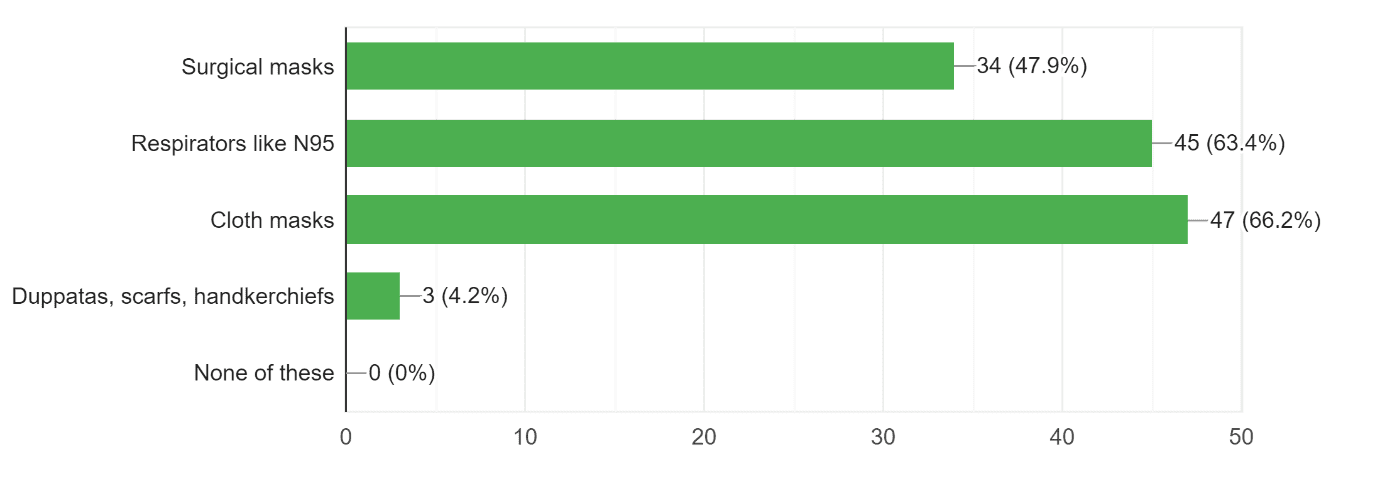
Figure 5: Which of the following do you use to cover your nose and mouth?
Some of the reasons for cloth masks being favored by most respondents is that they are widely available and they can also be made at home. Also, they are not single use like surgical masks and not as costly as N95 masks. The N95 respirators are mostly used by healthcare providers as they give high filtration and proper coverage.
4.3 Qualities in a mask
While buying a mask the most important quality that respondents look out for is the safety that it provides. Other qualities that respondents want in a mask are breathability, fitting, comfort and high filtration. Aesthetic appeal of a mask is not of much importance to the respondents. Here also, most of the respondents selected more than one quality in a mask.
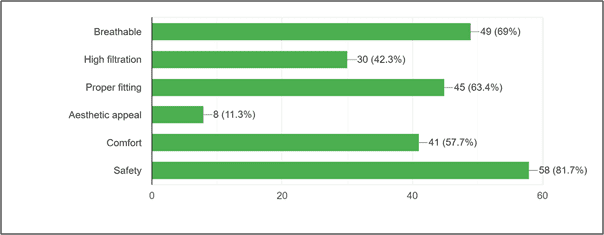
Figure 6: What qualities do you look for while buying a mask?
It is a good sign that respondents are looking out for the right qualities while buying a mask. Prioritizing safety, breathability and proper fitting shows that respondents are actually concerned about their well-being and are not willing to compromise on it.
4.4 Choice of fabric for mask
When asked if they would prefer masks made of natural fibers or synthetic fibers, around 65% respondents gave preference to natural fibers and only 1% for synthetic fibers. The rest mentioned having no specific preference.

Figure 7: Would you prefer masks made from natural fibers or those made from synthetic fibers?
Some of the reasons that respondents gave for choosing masks made from natural fibers is that they found them comfortable, breathable and safe. Some said that being natural they can easily degrade than synthetic fibers. Another response was that natural fibers can absorb sweat and so they can be useful in places with humid weather. Few others also said that masks made from natural fibers were soft on the skin.
4.5 Reusability of masks
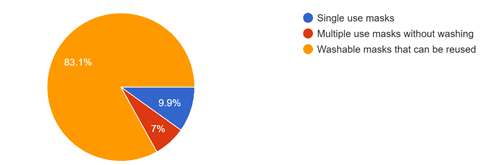
Figure 8: Regarding re-use of masks, which of the following do you prefer?
Of all the respondents surveyed, about 83% of the respondents prefer reusable washable masks, while about 10% prefer single use masks. The remaining respondents chose multiple use masks that do not need washing.
Again, with respect to washable masks, there was a very distributed opinion about their effectiveness with about 32% respondents saying that their effectiveness decreases after each wash whereas 38% saying that it does not decrease with every wash.
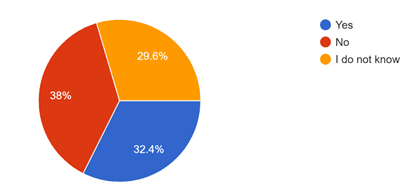
Figure 9: In case of washable cloth masks do you think the effectiveness of mask decreases after every wash?
Though most respondents prefer washable reusable masks, after few washes they lose their shape, ear loops become loose and the fabric starts looking worn out. All this in turn affects the effectiveness of the mask and hence respondents should make wise decision as to its reusability.
4.6 Layering and Double masking

Figure 10: Do you think more the layering more is the effectiveness of a mask?
Around 83% of the respondents believe that more the layering more is the effectiveness of masks. Also, around 79% respondents feel that double masking is more effective than wearing a single mask. The basic notion among respondents is that more the number of layers more will be the filtration and hence more effective prevention from the virus. However, care should be taken that the number of layers should not be in excess so that the breathability of the mask is reduced.

Figure 11: Do you think double masking is more effective than wearing a single mask?
4.7 Comfort and Effectiveness of a mask
When asked which masks did they find comfortable, about 52.5% respondents answered layered cotton/ cloth masks. About 18.6% respondents said that they found surgical masks comfortable while 8.5% answered N95 masks. Few others also remarked that masks with head bands or that can be tied are more comfortable than the traditional ones with ear loops.
In terms of effectiveness, around half the attendees are of the opinion that layered masks having layers of both cotton, polyester and/or blends are the most effective. It is followed by 27% of the respondents choosing masks treated with natural/environment friendly safe chemicals. Woven cotton masks are considered as effective by 13% of the respondents. Remaining attendees chose non-woven polyester and knitted cotton masks.

Figure 12: Which of the following masks do you think is the most effective?
The reason for layered masks being chosen as effective by most respondents is that by having layers of both cotton and polyester or blends, they show a combination of good qualities of both, that is, breathability and high filtration. Recently, masks treated with chemicals have also gained popularity as the chemicals provide an extra layer of protection from the virus.
4.8 Discomforts caused by masks
Masks cause various kinds of discomforts. The major problem faced by respondents is with spectacles, which is fogging. Another discomfort is caused by the ear loops on mask. Though a few masks without ear loops are available in the market, they are not as comfortable and respondents end up using the traditional ones leading to irritation near the ears. Also, due to the confined space some respondents feel breathless on wearing a mask for a long time while for others it causes sweating or heating.
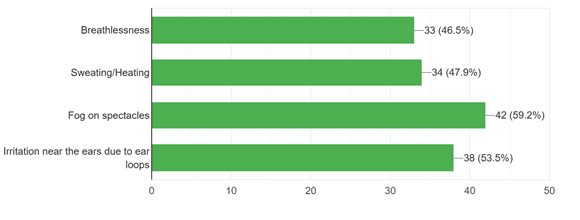
Figure 13: What is the most discomforting part of wearing a mask?
4.9 Where do respondents buy masks from?
Most of the respondents said that they prefer buying masks from local shops, followed by from online shopping sites. There were also a small portion of attendees who bought masks from small businesses and even those whose who made masks at home.

Figure 14: From where do you usually buy your masks?
4.10 Price considerations of a mask
There are various masks available in the market costing from Rs.2 to above Rs.500. However, masks at very low price may not be quite effective. So, we asked respondents if they are willing to pay less price for a mask even if it compromises with its qualities and 83% of the attendees responded negatively. From the survey we found that majority of the respondents buy masks in the price range of Rs.50-100.

Figure 15: Are you willing to pay less for a mask even if it is not fulfilling the necessary qualities like reusability, breathability, comfort, etc?
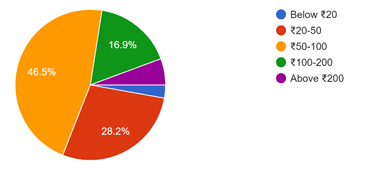
Figure 16: While buying a mask how much money are you willing to spend?
4.11 Will respondents use masks once the pandemic ends?
We surveyed whether respondents will continue wearing masks once the pandemic ends. 24% attendees responded positively while 17% replied negative. The remaining stated that they would wear a mask only when in crowded places or large gatherings.

Figure 17: Will you continue wearing masks while going out once the pandemic ends?
4.12 Suggestions from responders
We also asked responders for suggestions to make masks more effective and comfortable. Here are some of those –
- The top two suggestions were to increase the breathability of masks and to use some other alternatives for ear loops like providing head bands, neck bands, adjustable loops or providing strings to tie the mask.
- Another suggestion was that masks should be designed as per face cut and should have proper face coverage.
- Nanofibers can be used to make masks so as to increase filtration capacity which will in turn increase its effectiveness.
- Absorbent fabric can be used so as to prevent sweat accumulation.
- A Gel based layer may be provided to keep masks cool.
- Masks can be designed in such a way that there is no fogging on spectacles.
- The nose seals can be padded to make them comfortable.
5.Conclusion
This survey study was done to understand the level of consciousness among the respondents regarding various aspects related to masks. From the responses that were collected, we conclude a positive outcome. In general, there is very good awareness among the respondents about the need to use masks. While purchasing masks respondents are conscious about the qualities that need to be given priority like effectiveness, breathability, etc. Respondents are also wisely choosing the fabrics from which masks are made so that their safety is ensured. In regards of price too, respondents are making sure that the mask quality is not compromised at the expense of its price. The respondents are familiar about the discomforts caused by masks and have provided very useful suggestions to overcome them.
References-
- O’Dowd K., Nair K.M., Forouzandeh P., Mathew S., Grant J., Moran R., Bartlett J., Bird J., Pillai S.C., Face Masks and Respirators in the Fight Against the COVID-19 Pandemic: A Review of Current Materials, Advances and Future Perspectives. Materials, 13, (7), 3363, (2020).
- https://www.who.int/news-room/commentaries/detail/transmission-of-sars-cov-2-implications-for-infection-prevention-precautions
- Brooks JT, Butler JC., Effectiveness of Mask Wearing to Control Community Spread of SARS-CoV-2. JAMA, 325, (2), 998, (2021).
- https://www.healthline.com/health/coronavirus-mask
- Ueki H, Furusawa Y, IwatsukiHorimoto K, Imai M, Kabata H, Nishimura H, Kawaoka Y., Effectiveness of face masks in preventing airborne transmission of SARS-CoV2. mSphere, 5, (10), (2020).
- Abhiteja Konda, Abhinav Prakash, Gregory A. Moss, Michael Schmoldt, Gregory D. Grant, and Supratik Guha., Aerosol Filtration Efficiency of Common Fabrics Used in Respiratory Cloth Masks. ACS Nano, 14, (5), 6339, (2020).
- Brooks JT, Beezhold DH, Noti JD, et al., Maximizing Fit for Cloth and Medical Procedure Masks to Improve Performance and Reduce SARS-CoV-2 Transmission and Exposure. MMWR Morb Mortal Wkly Rep,70, (2), 254, (2021).
- https://medical.mit.edu/covid-19-updates/2020/08/how-do-i-choose-cloth-face-mask
- https://resources.hygienehub.info/en/articles/4178670-what-should-be-considered-when-making-or-purchasing-fabric-masks
- https://www.who.int/news-room/q-a-detail/coronavirus-disease-covid-19-masks
Article By:
Aranya Mallick, Ashlesha M. Soman
Department of Fibres and Textile Processing Technology, Institute of Chemical Technology

